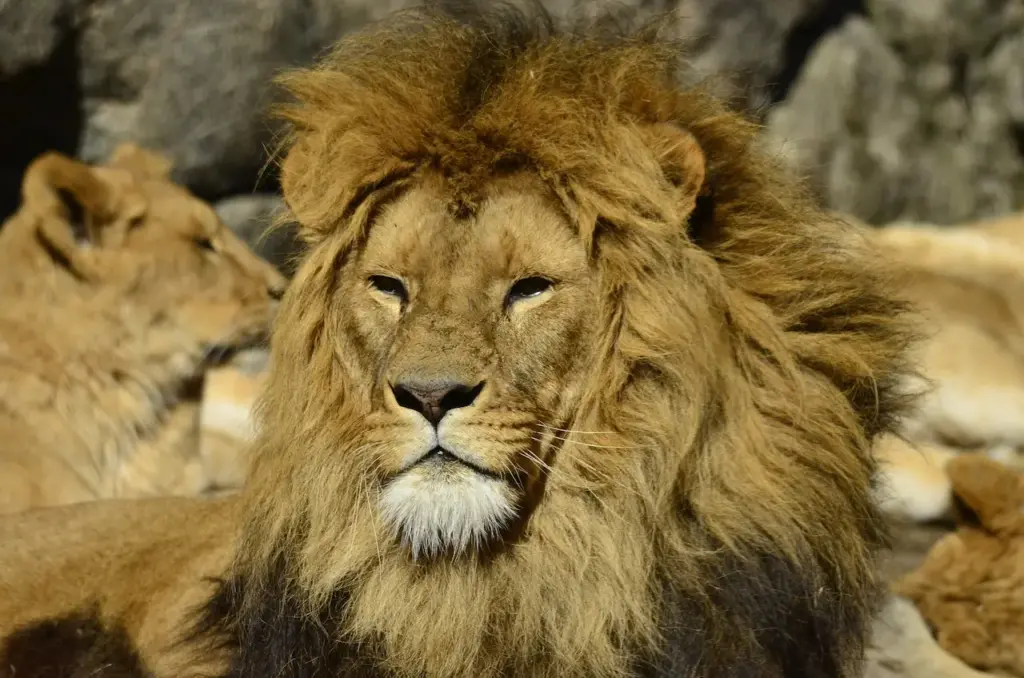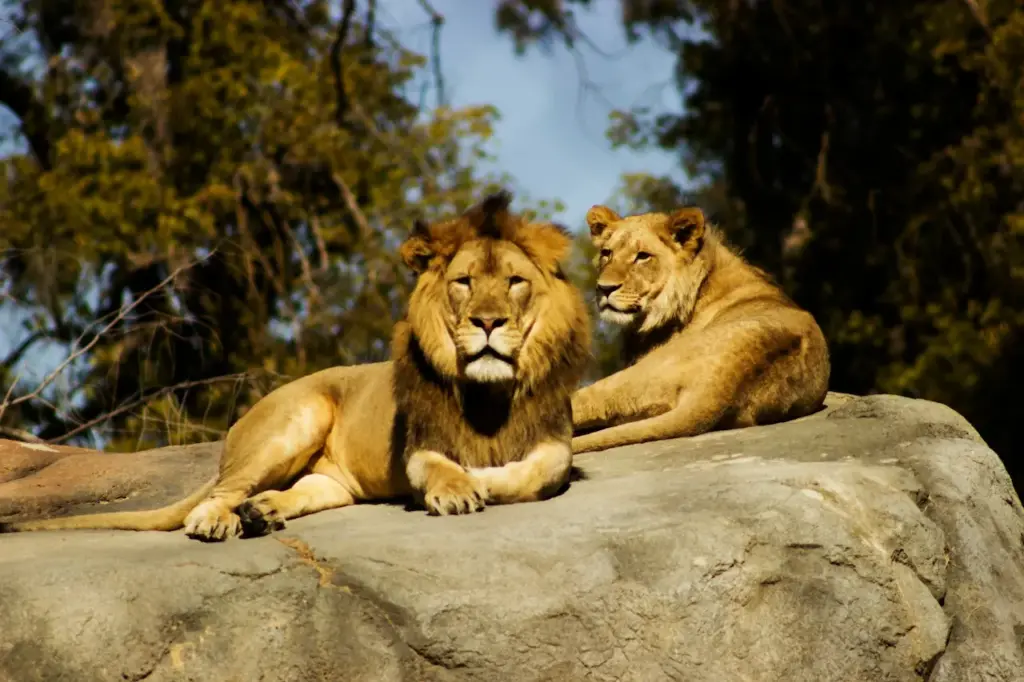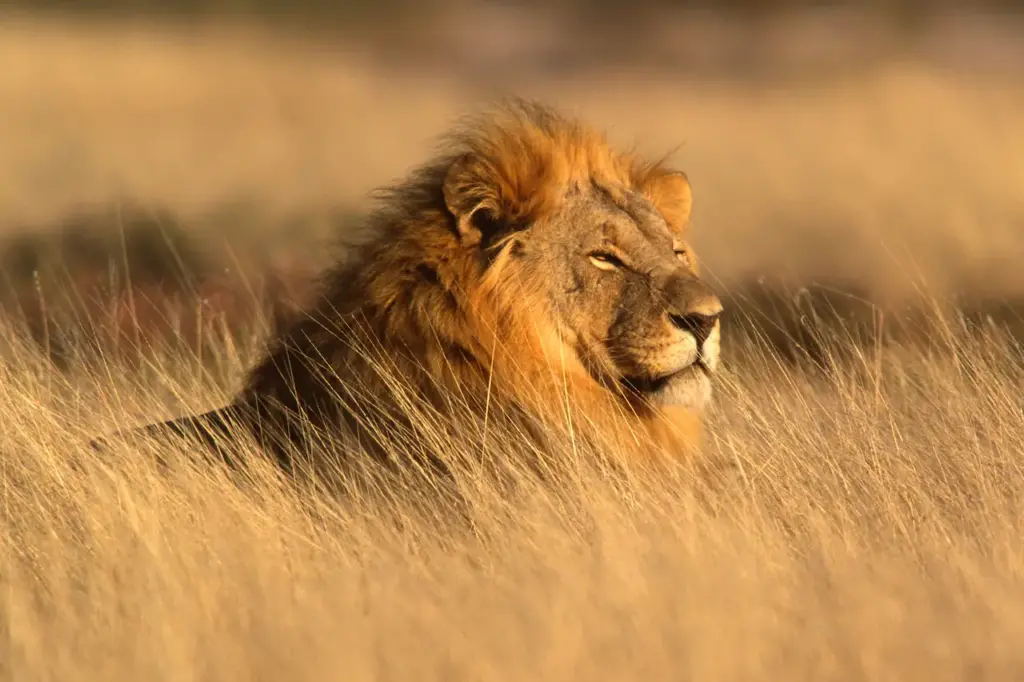What Eats Lions?
Categories
- Accipitridae (1)
- Acrididae (1)
- Algae (2)
- Alligatoridae (1)
- Amoebidae (1)
- Amphibians (3)
- Anatidae (1)
- Anguillidae (1)
- Arachnids (2)
- Bears (2)
- Big Cats (3)
- Birds (13)
- Bovidae (5)
- Bufonidae (1)
- Camelids (1)
- Cameras (1)
- Canines (13)
- Caridea (1)
- Carnivora (10)
- Castoridae (1)
- Cats (4)
- Cebidae (1)
- Cephalopod (1)
- Cervidae (2)
- Cetacean (1)
- Chondrichthyes (1)
- Crocodilia (2)
- Crustaceans (4)
- Culicidae (1)
- Cyaneidae (1)
- Dasypodidae (1)
- Dasyurids (1)
- Deer (1)
- Delphinidae (1)
- Desktop (1)
- Didelphidae (1)
- Dinosaurs (1)
- Dogs (13)
- Dolphins (2)
- Echinoderms (1)
- Education (10)
- Elephantidae (1)
- Equine (1)
- Erethizontidae (1)
- Erinaceidae (1)
- Farming (1)
- Felidae (5)
- Fish (5)
- Food Chain (31)
- Food Web (2)
- Formicidae (1)
- Frugivore (1)
- Gaming (1)
- Gastropods (1)
- Giraffids (1)
- Great Apes (2)
- Health Conditions (3)
- Herbivore (4)
- Hi-Fi (1)
- Hippopotamidae (1)
- Hominidae (1)
- Insects (10)
- Invertebrates (2)
- Keyboards (1)
- Laptops (1)
- Leporidae (1)
- Mammals (23)
- Marsupials (4)
- Mephitidae (1)
- Microchiroptera (1)
- Mollusks (2)
- Mongoose (1)
- Muridae (1)
- Nocturnal Animals (1)
- Odobenidae (1)
- Omnivore (2)
- Phasianidae (1)
- Phocidae (1)
- Plankton (1)
- Plants (2)
- Primate (1)
- Ranidae (1)
- Reptiles (7)
- Rhinocerotidae (1)
- Rodents (5)
- Salamandridae (1)
- Scarabaeidae (1)
- Sciuridae (2)
- Sharks (1)
- Shellfish (1)
- Sound (1)
- Spheniscidae (1)
- Suidae (1)
- Superfamily Papilionoidea (1)
- Theraphosidae (1)
- What Eats (5)
Mostly, animals get eaten by lions, not the other way around. That’s because lions are at the top of their food chain, and the very centre of their food web. Lions have almost no predators.
The lion is one of the world’s most famous apex predators. They are kings of Africa’s jungles, dominating other predators due to their powerful physiques and deadly hunting abilities.
Lions are still threatened by other predators who will eat their prey at any time. They also face constant pressure from scavengers, who try to steal the kills. The lions also have to deal with parasites and diseases that can make them weak and vulnerable.
This article will give you a detailed look at the different predators, diseases, and scavengers that threaten lions in their African habitats.
Table of Contents
Toggle
Close-Up Image Of A Male Lion
Natural Predators of Lions
Although adult lions can be formidable predators they are also vulnerable to predation during the cub stage. They are also at risk if they are injured or sick, and when solitary individuals become overwhelmed by group attacks.
Spotted Hyenas
The lions have a fierce competitor in the spotted hyena. Clans of up 80 individuals can live on territories that overlap with lions. Hyenas are capable of crushing bones with their powerful bite.
They will attack and mob any vulnerable lion, as they see them both as competition and prey. Hyenas cause a large portion of the death of lion cubs, although adult lions can hold their own.
Leopards
Leopards are strong big cats that hunt alone. They compete with lions to catch prey. They can climb trees with ease, and will often carry their prey high in the air to keep scavengers away.
If given the chance, leopards will attack lion cubs. They are a constant danger. They can survey lion family groups and strike when they are vulnerable.
African Wild Dogs
Wild dogs hunt in packs of 20-40 individuals that are highly coordinated. They can sometimes overwhelm a lone adult lion during territorial disputes.
Wild dogs will attack weaker lions, and even their cubs, to reduce the lion population. Their powerful jaws are capable of inflicting lethal injuries.
Nile Crocodiles
A large Nile Crocodile is a powerful aquatic predator that can take down adult lions but also young, injured, or sick individuals.
The lions are constantly in danger when they need to drink or cross rivers or lakes.
Black-backed Jackals
They often follow injured lions, waiting for an opportunity. The jackals will overwhelm weak or aging lions with their sheer numbers. They are a danger to young pride and lone individuals.
The lion must be vigilant, maintain physical strength, and coordinate well to avoid predation, especially by hyenas or leopards.
Lion Kills: Scavengers Compete for Lion Kills
The lions are also faced with scavengers who want to steal their kills and eat them before they have a chance to digest them. This forces additional hunting.
Watch Lions Attacking Hyenas
Spotted Hyenas
Hyenas continue to be the main food competitor for lions. Hyenas can quickly displace and overwhelm lions with their large clans, powerful teeth, and the ability to eat food rapidly. The lion pride is under increased pressure to hunt.

Two Lions Resting
Marabou Storks
The African storks are massive, standing over 5 feet high with a wingspan of up to 12 feet. The vultures compete with them at the lion-killing sites. Marabou storks use their huge bills to tear flesh with quick bites.
Vultures
The vultures are many, ranging from the white-backed vulture to the lappet-faced vulture that has an 8-foot wingspan.
Vultures can quickly gather in large numbers, with so many eyes, on the kill site of lions. They hiss and flap their wings, driving lions from their prey while they feed.
Jackals
The black-backed jackal, as well as smaller relatives such as side-striped Jackals, lurk near lion killings and dart in to grab tiny scraps. Although nimble and agile, they are still intimidated by adult male lions. They must steal small scraps.
Cape Fur Seals
Occasionally, when hunting along the coast, lions lose their kills to Cape fur seals. These aggressive animals emerge from the sea and chase away the big cats from carcasses on the shoreline. They are protected by their blubber.
Nile Crocodiles
Even after a lion kills, these ambush predators are still a danger. Crocodiles enter the land from nearby waterways to try and claim the carcass. Their armored bodies protect them from lion attacks.
The extreme competition between lions can lead to them having to kill multiple prey every few days to maintain enough food. This is a tiring process, but it helps to regulate the ecosystem’s overall balance.
The Impact of Lion Prey on Vulnerability and Diseases
The lions have to deal with parasites and diseases that affect both their vulnerability as well as the availability of prey.
Anthrax
When outbreaks of this deadly bacterial disease occur, it affects animals with hoofed feet, such as wildebeests, kudus, and buffalos. This allows lions to hunt these herbivores more easily. It can also poison lions who eat infected meat.
Canine Distemper
Distemper is spread by other predators such as hyenas, jackals, and jackals. It has caused many lions to die. It attacks the nervous system and causes seizures, leaving lions vulnerable to attack and starvation.
Feline Immunodeficiency Virus
It is believed that this weakening virus can be transmitted to lions by infected prey putting blood into the mouth/eyes of lions while hunting. It can cause secondary infections, leaving lions more vulnerable.
Toxoplasmosis
The parasite causes liver and lung disease in lions that consume infected prey. This parasite leaves them weak and malnourished.
Tick-borne DiseasesToxoplasmosis
Ticks can spread diseases such as babesiosis and ehrlichiosis. These diseases destroy red blood cells, weaken the muscles and damage organs. The lions are weakened and vulnerable to predators.
Tapeworms Rabies
When consumed, the cysts of larval tapeworms embedded in muscle and organ tissues of prey can stunt the growth of lions as well as deprive their bodies of nutrition. This parasitic infection can hinder hunting abilities.
Rabies
The virus infects the nervous system and is transmitted by hyenas and jackals. This virus causes lions to become aggressive, have seizures and die.
The threat of disease is a double-edged sword. It can boost lion hunting by reducing the strength of prey, but it could also infect lions with pathogens and internal parasites which make them more vulnerable to predators.

Image of A Male Lion On the Bush
Human Impacts on Lion Predation Dynamics
Humans have had a major impact on the natural balance of predation that lions developed in Africa.
- Trophy hunting healthy specimens undermines pride.
- Elimination of predators that compete with lions, such as wild dogs.
- Loss of habitat due to urbanization and agriculture results in a crowded environment for predators and their prey.
- Snaring injuries caused by poaching lion parts facilitate predation.
- Prey is easier to catch when livestock carry diseases like bovine tuberculosis.
- Climate change and droughts are stressing ecosystems and altering predator-prey-scavenger relationships.
Both indirect and direct human pressures continue to be the greatest threat to lion populations. Conservation efforts are crucial for maintaining a balanced predation dynamic.
The Conclusion
Lions are formidable predators, but they also exist in a complex ecosystem that regulates their population through diseases and competition.
Other dangerous predators such as hyenas and leopards kill the vulnerable animals. Crocodiles are also a threat. Hyenas and other predators such as vultures and storks steal the lion’s kills. This forces increased hunting.
Contagious illnesses also reduce lions’ physical strength, while increasing their hunting success when they infect prey populations. Human activities have disrupted the natural balance that lions evolved to.
The dynamics of lion predation in Africa are complex and multi-dimensional. This highlights the need for ecosystem-based conservation efforts.
